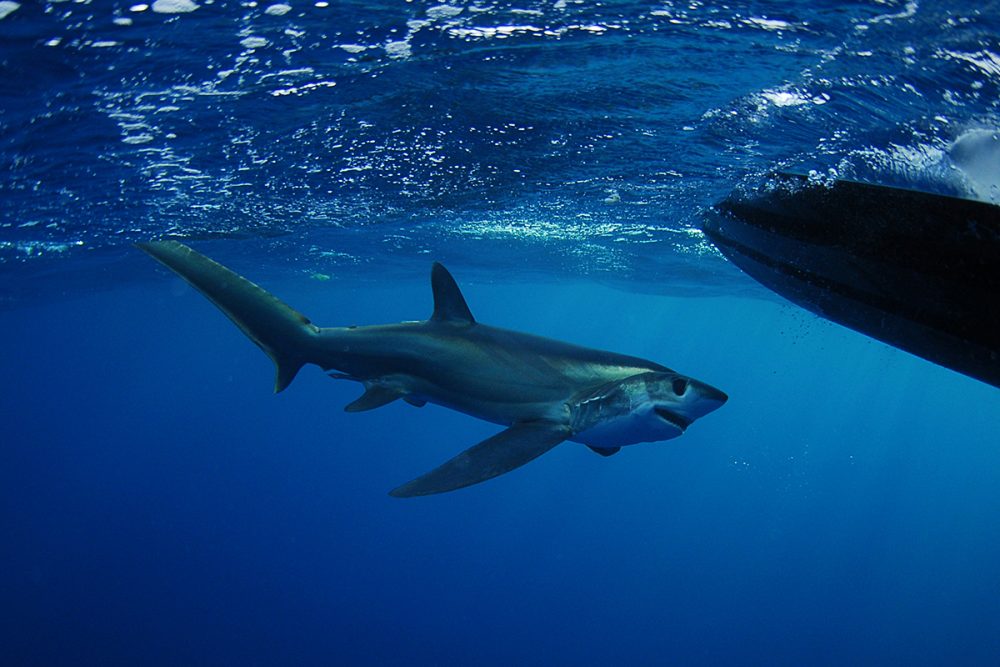
Bigeye Thresher Shark Alopias superciliosus
The Bigeye Thresher Shark, scientifically known as Alopias superciliosus, is a unique and fascinating species of Pelagic Thresher Shark characterized by its distinctive, large eyes and long, whip-like tail. A part of the family Alopiidae, it is typically found in the deep waters of tropical and subtropical oceans, traversing various depths from.
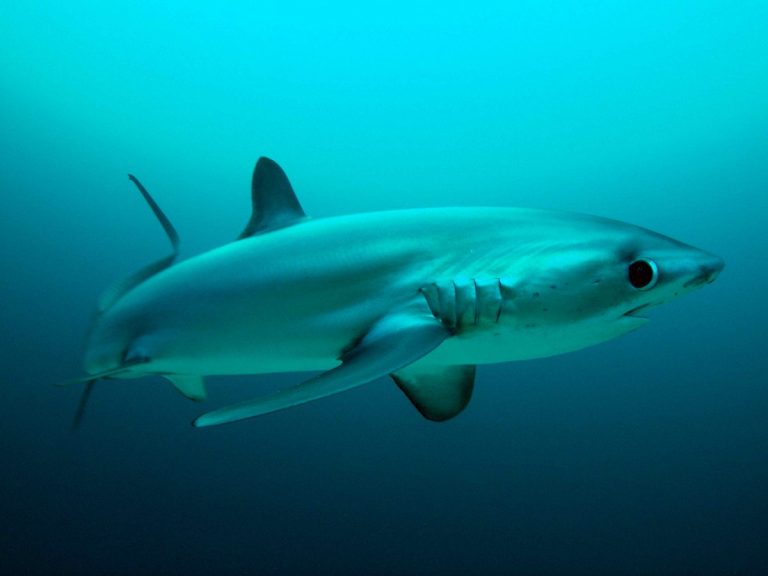
WATCH 3mlong bigeye thresher shark plucked from Alicante's port Olive Press News Spain
The Bigeye Thresher has, in addition, a well developed orbital retia — a kind of 'brain heater', which may prevent the predator from becoming addled in the mind-numbing chill at depth. Keeping its wits sharp may be of particular adaptive value to the Bigeye Thresher Shark. The teeth of this species are larger and more obliquely-cusped than in.
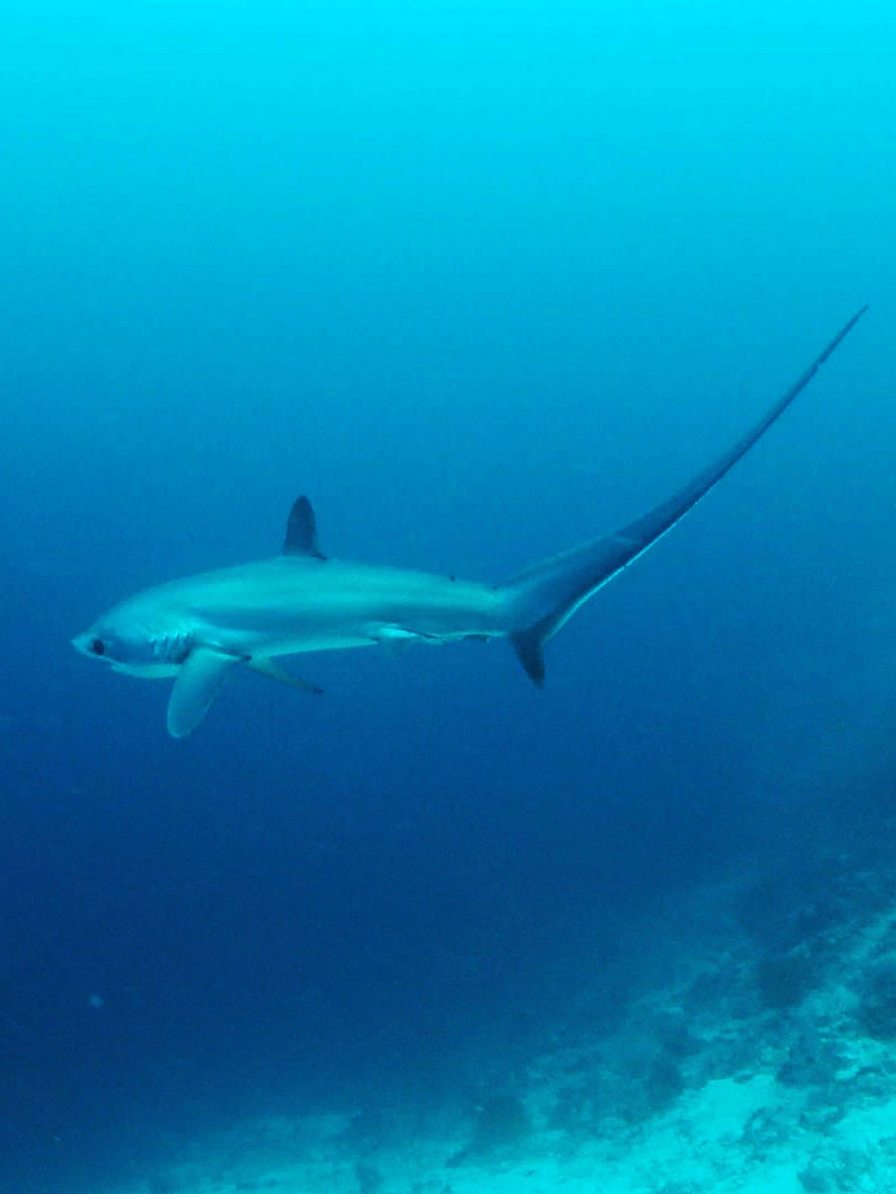
BBC One Shark Bigeye thresher shark
Shark Research Institute PO Box 40, Princeton, NJ 08542, USA 609.921.3522 609.921.1505 [email protected]. Facts about the Bigeye thresher shark - Alopias superciliosus from the Shark Research Institute (SRI). SRI conducts and sponsors rigorous, peer-reviewed field research about sharks and uses science-based information to educate and advocate.
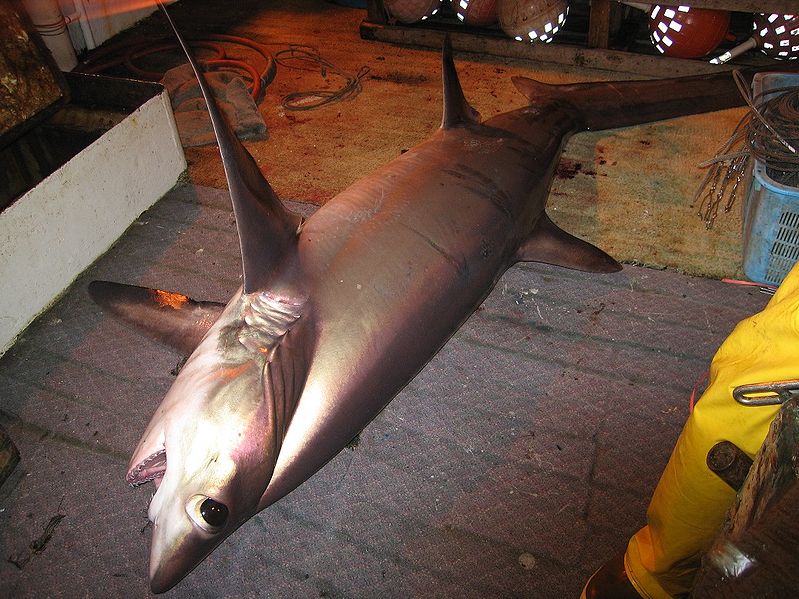
Bigeye Thresher Shark Alopias superciliosus Shark Database
The Big eye thresher can be distinguished by its enormous, upward-looking eyes, which are much larger than those of the common thresher and are as highly developed an optical system as nature has produced outside of the larger Cephalopods. Their huge eyes are developed for deep water dark and night vision capabilities.
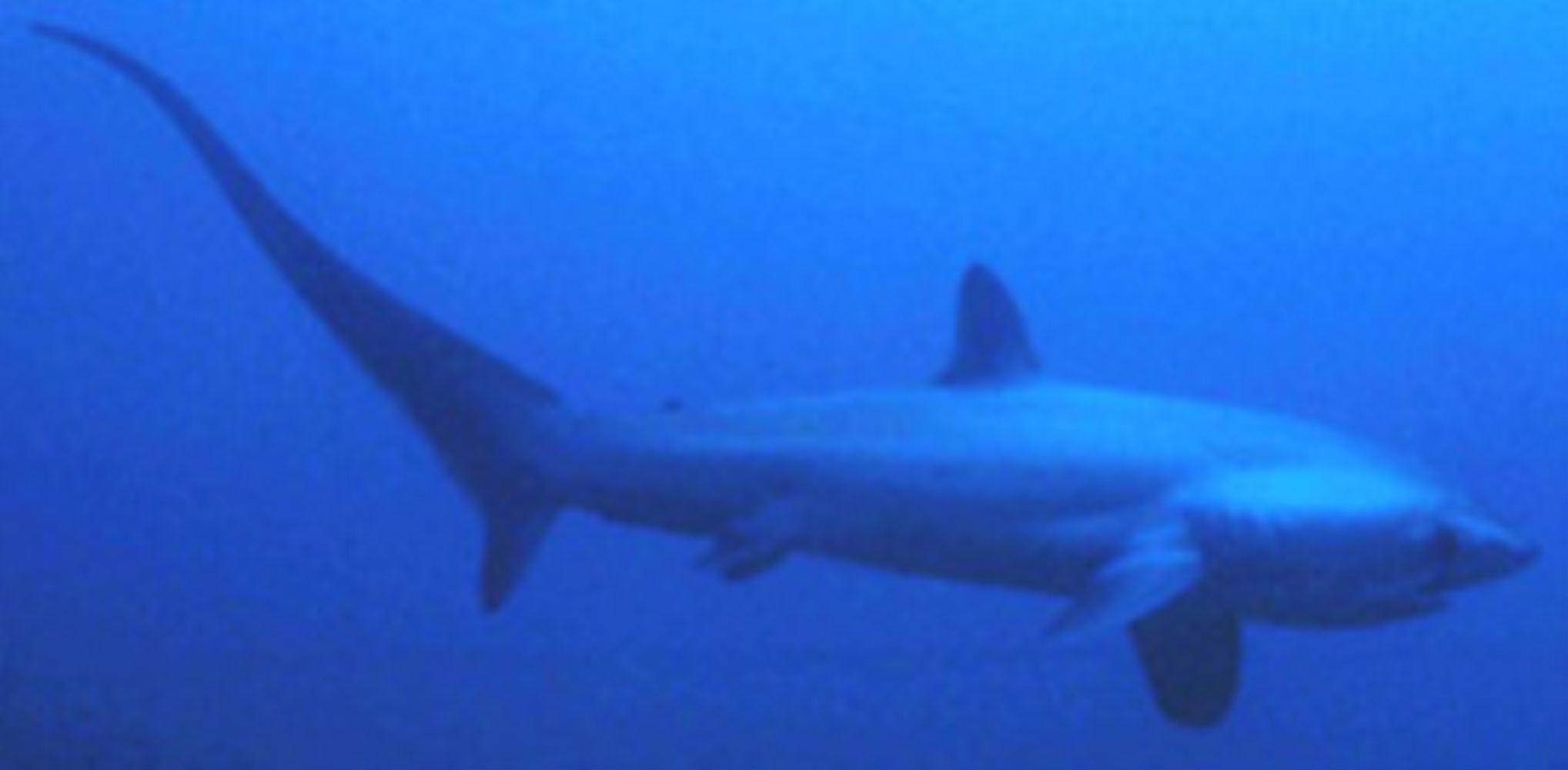
Bigeye Thresher Shark Information and Picture Sea Animals
Bigeye Thresher Shark. Its huge, upward-mounted eyes immediately mark the Bigeye Thresher Shark (Alopias superciliosus) as a deep-sea predator that hunts its prey from far below. The species part of the Bigeye Thresher's scientific name means "conceited". But — like every other aspect of this shark's strange appearance — its unusual.
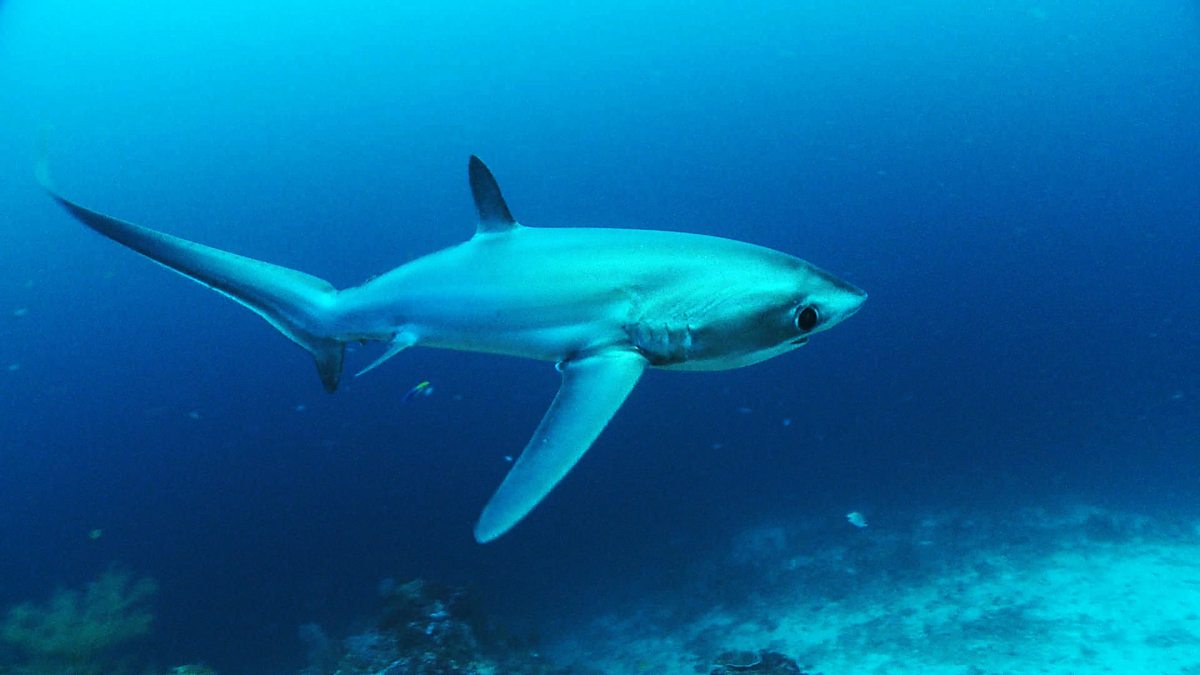
BBC One Shark Bigeye thresher shark
The bigeye thresher ( Alopias superciliosus) is a species of thresher shark, family Alopiidae, found in temperate and tropical oceans worldwide. Like the other thresher sharks, nearly half its total length consists of the elongated upper lobe of the tail fin. Its common name comes from its enormous eyes, which are placed in keyhole-shaped.
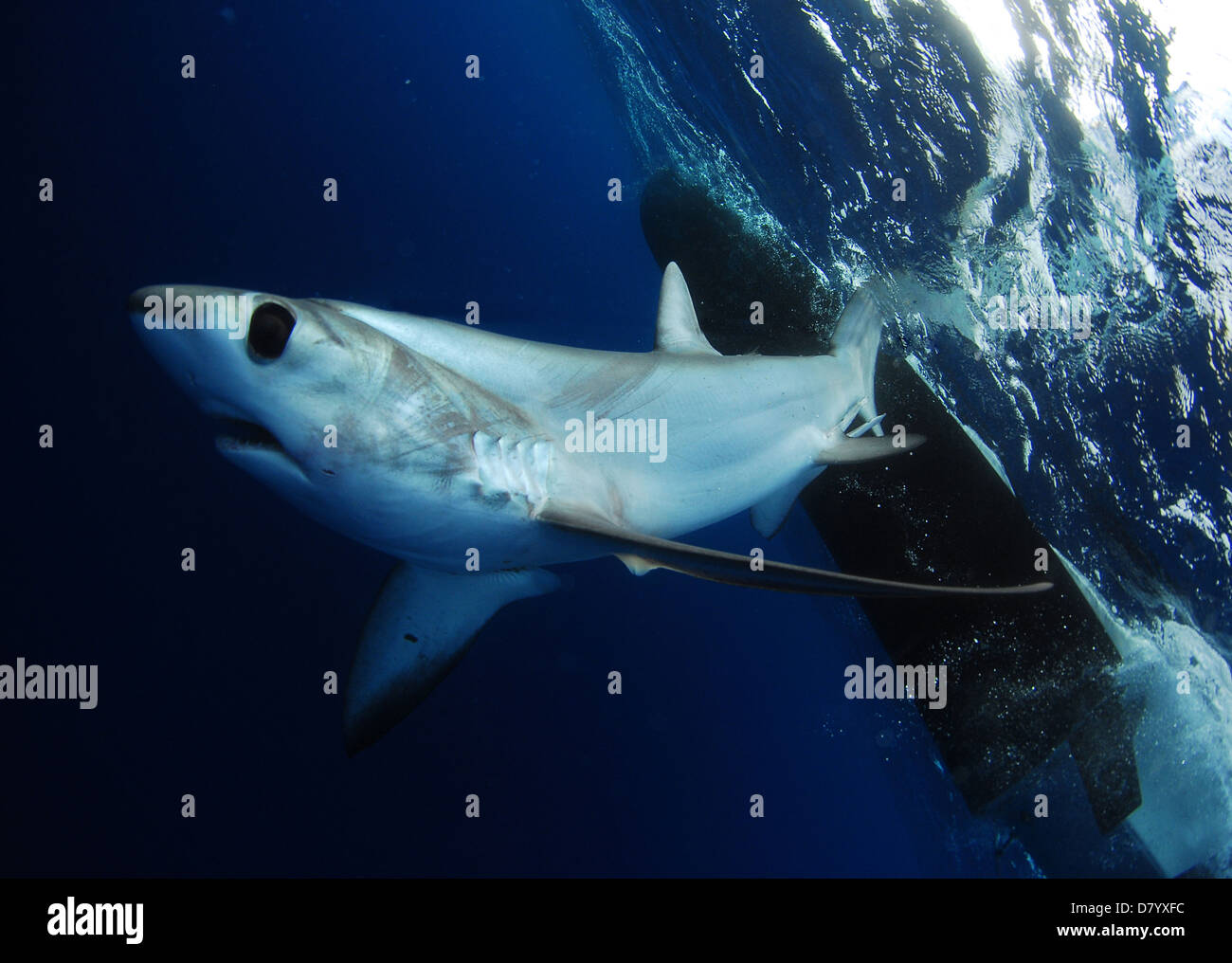
Bigeye Thresher shark swimming in the Gulfstream in the Atlantic Ocean off of South Florida
Bigeye Thresher Sharks ~ MarineBio Conservation Society

Big Eye Thresher Shark caught on our shark fishing charter. He's smiling for the camera! www
While there are 3 recognised species of thresher, there's evidence that there might be a 4th species, that has been misidentified as the bigeye thresher. There's only been one sample found so far the eastern Pacific off Baja California in 1995. Scientific DNA analysis suggests it might be a new undiscovered species. 1. 5.

Pin on Blues and Threshers
The bigeye thresher is a large shark of the Alopiidae family. Its most distinctive characteristics are it's long tail, which can be about half his total size, it's extremely large eyes, and the grooves on its head. Its eyes are adapted to see in very low light. The bigeye thresher spends the day in very deep waters, and moves up to the.
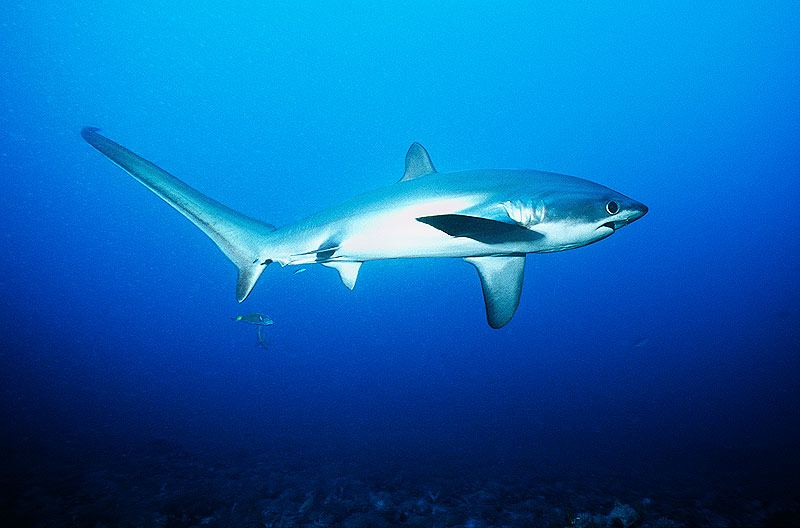
Bigeye Thresher Shark The Life of Animals
Bigeye thresher shark (Alopias superciliosus) a tail like a whip to stun prey. Diet. Feeds on bony fish such as tuna, anchovies and sardines, as well as squid. Habitat.

Bigeye thresher shark Alopias superciliosus — Shark Research Institute
The bigeye thresher (Alopias superciliosus) is similar to this species; however, it has an enormous vertically oval eye, a v-shaped ridge on the head, a longer snout, and fewer teeth. Also, the free rear tip of its dorsal fin reaches behind the pelvic fin origin.
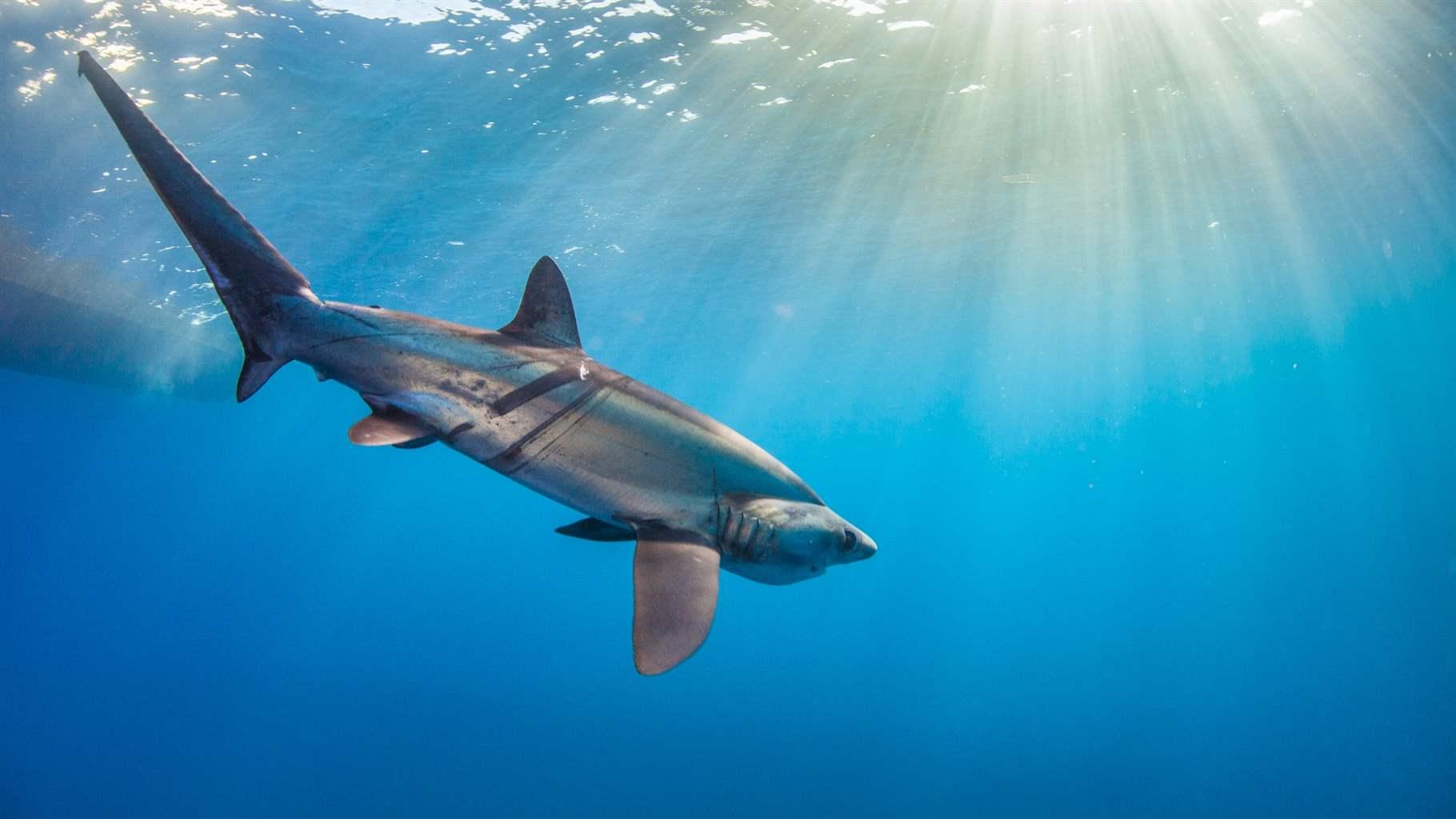
Gear Targeting Swordfish Catches Bigeye Thresher Sharks, But Most Survive Release The Pew
Bigeye Thresher. Alopias superciliosus. Bigeye thresher. Photo courtesy Virginia Institute of Marine Science. The bigeye thresher has the long tail of most thresher sharks (nearly half its body length is the upper caudal lobe or top half of the tail), but this one gets its name from its large eyes, adapted for seeing in low light.

Bigeye Thresher Shark Shark pictures, Thresher shark, Shark photos
The bigeye thresher (Alopias superciliosus) is a species of thresher shark, family Alopiidae, found in temperate and tropical oceans worldwide. Like other thresher sharks, nearly half its total length consists of the elongated upper lobe of the tail fin. Its common name comes from its enormous eyes, which are placed in keyhole-shaped sockets that allow them to be rotated upward. This species.
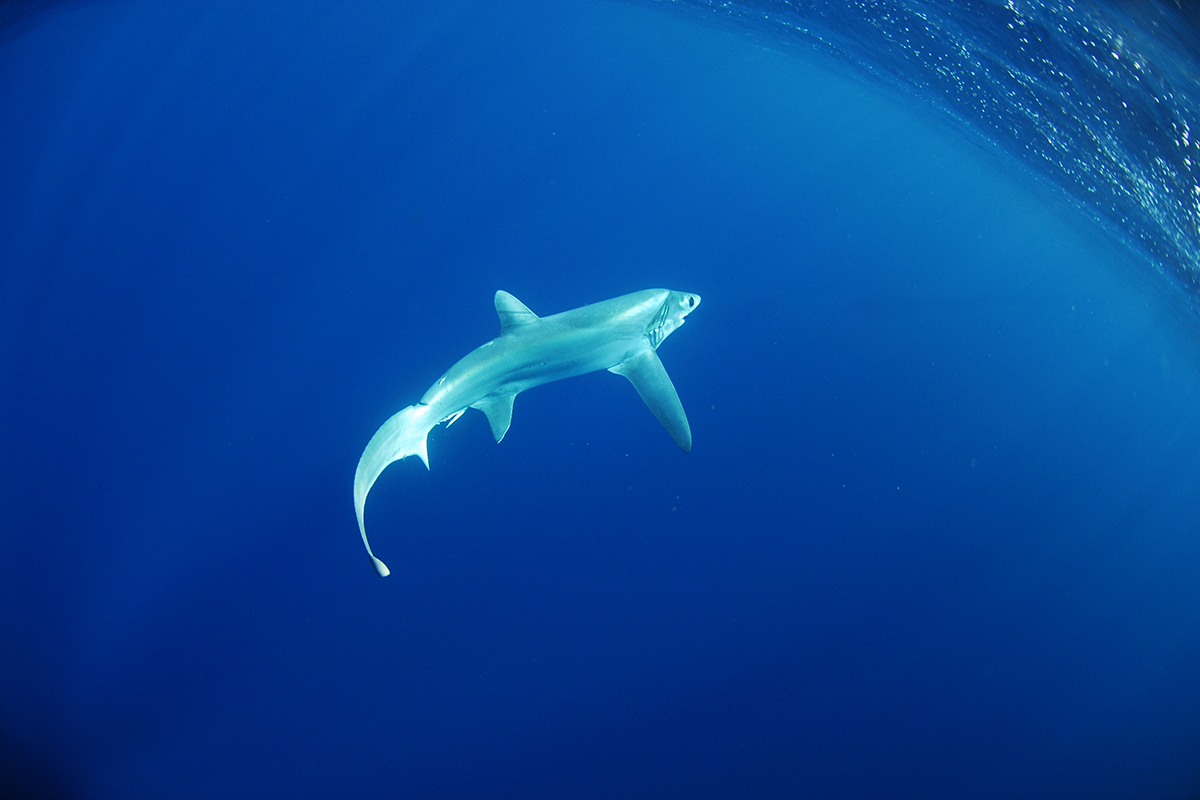
Bigeye Thresher Shark Alopias superciliosus
Bigeye thresher shark. Very long tail, almost as long as rest of body; violet-gray dorsally becoming lighter on sides; distinctive v-shaped groove on top of head gives helmet-like appearance. Aplacental vivipary, embryos feed on eggs in uterus after using up yolk sac; litter size normally 2; size at maturity 9 ft (9-10 yrs) for males, 11 ft (12.

24 Bigeye Thresher Facts [2023]
All three species of Thresher Shark belong to the genus Alopias and include the Pelagic (Alopias pelagicus), Bigeye (Alopias superciliosus) and Common (Alopias vulpinus) Thresher. All three species have biological characteristics that result in low productivity, Bigeye Thresher, in particular, is one of the less productive pelagic shark species, due to the very low fecundity and late maturity.
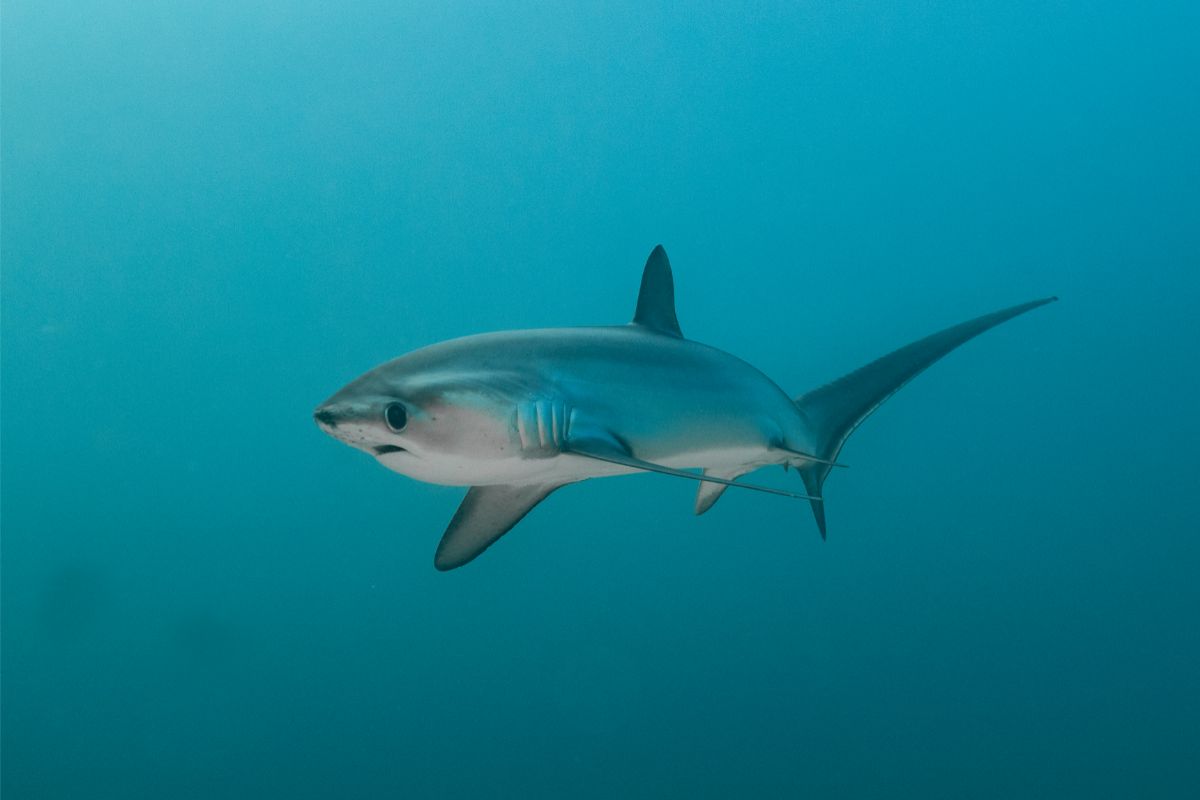
What Are The Biggest Threats To The Bigeye Thresher? defendersblog
The bigeye thresher shark is an epipelagic (lives in the surface layer of the ocean) species utilising diel migration - descending to deep waters during daylight and returning to shallower depths during the night. However, they have been recorded at a depth of 723m. They can also travel huge distances, with one tagged individual travelling 2.